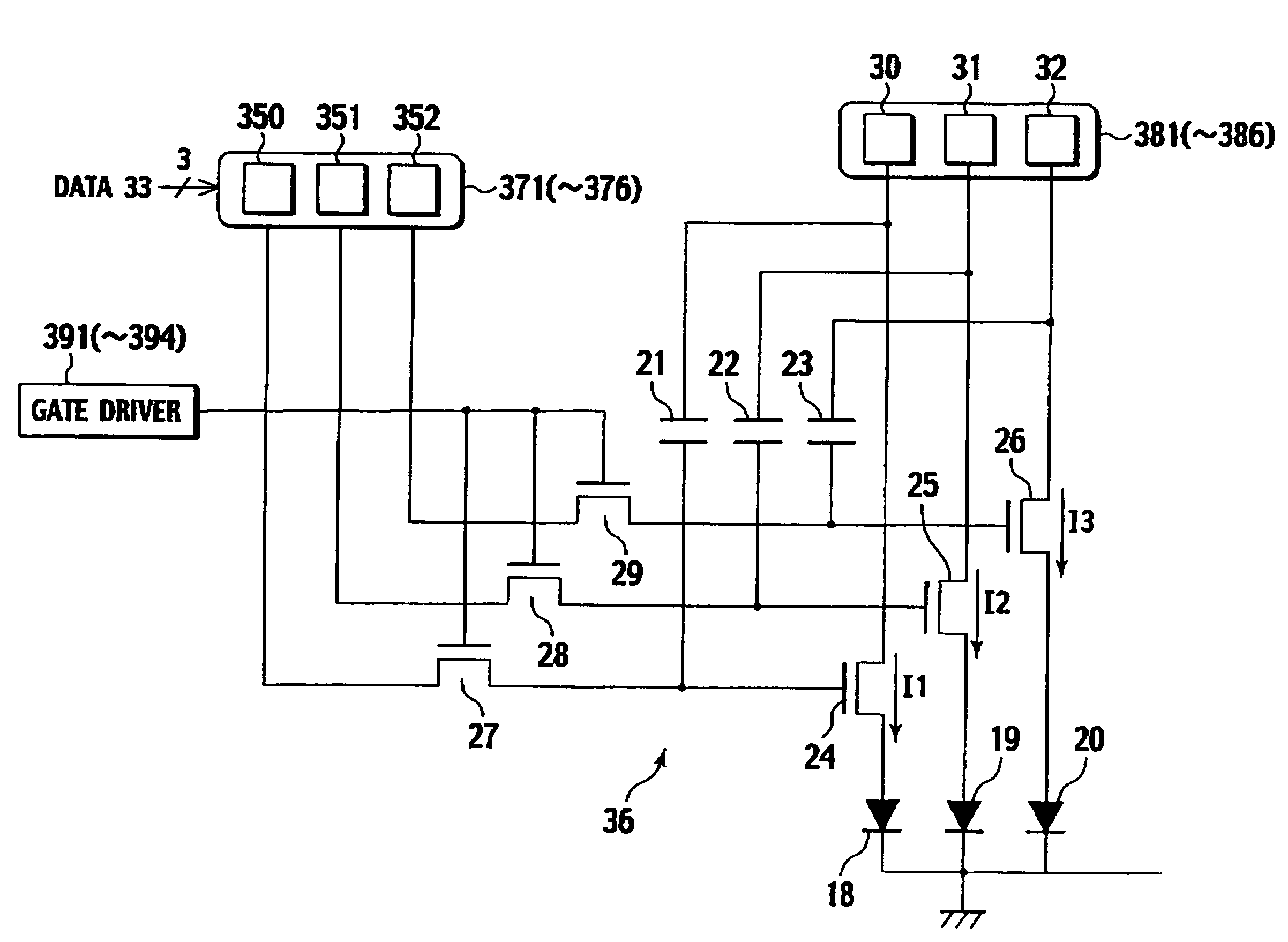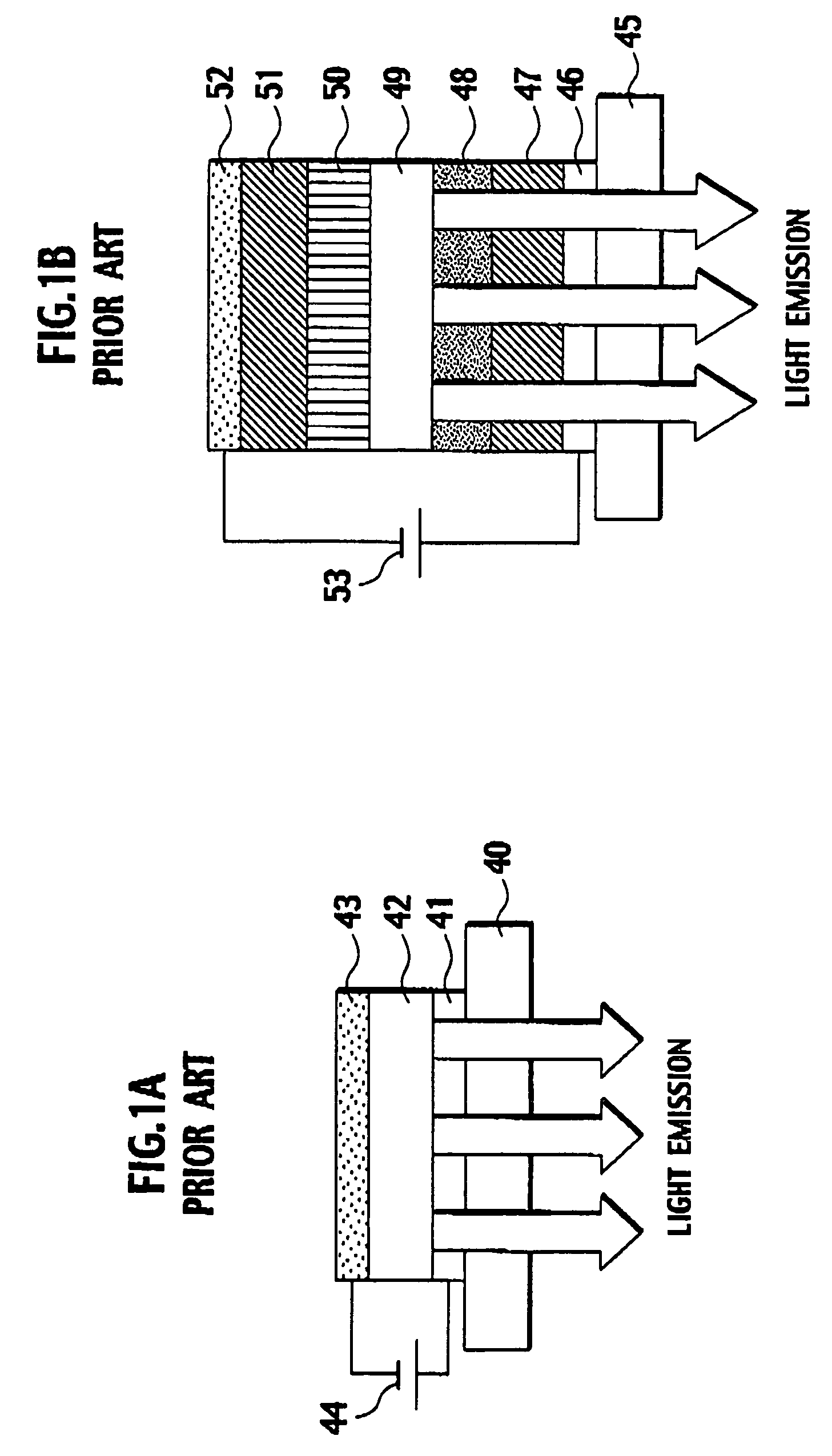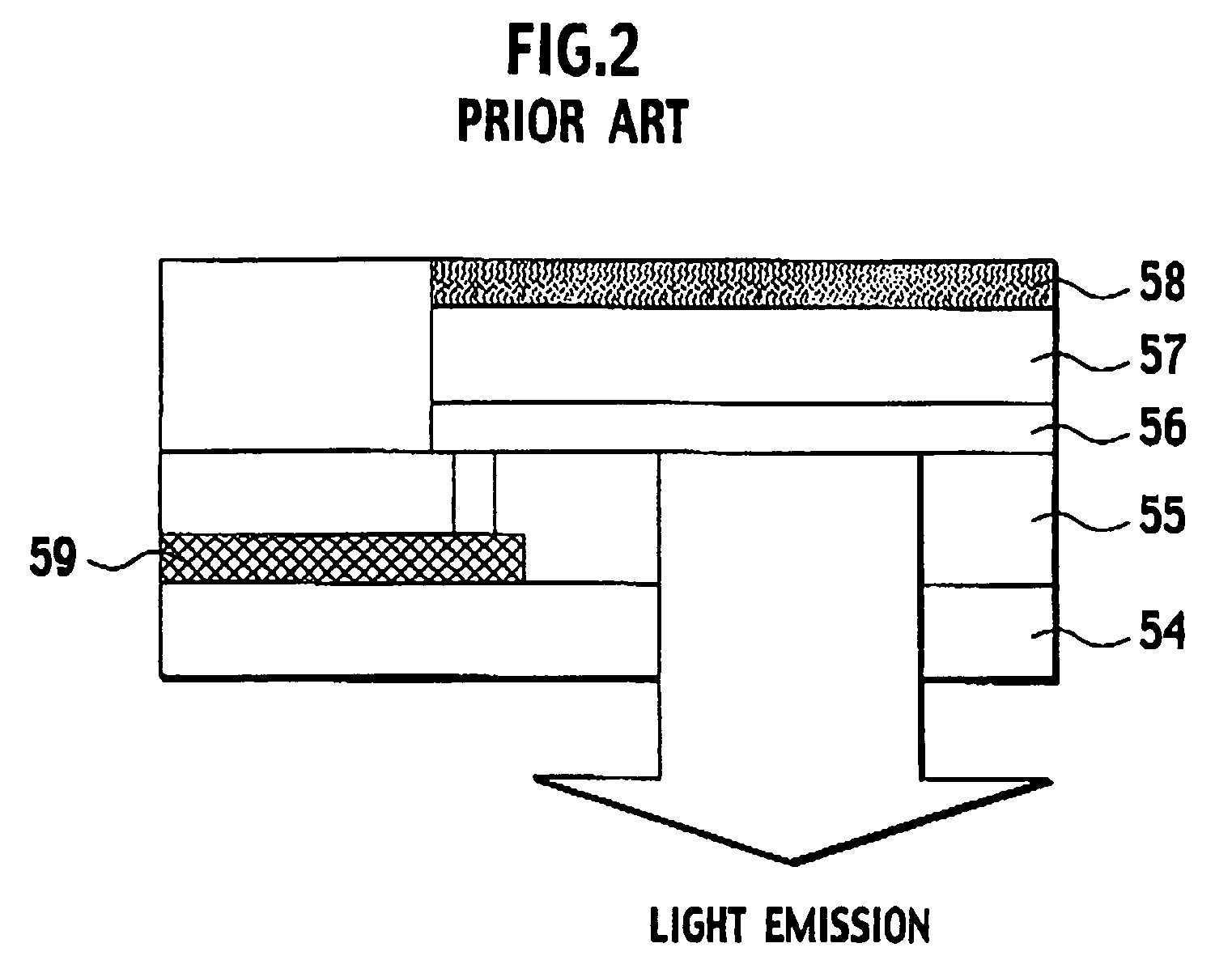Display with multiple emission layers
a technology of emission layer and display, applied in the field of display, can solve the problems of deteriorating the quality of displayed images, uneven brightness over the display, and the length of the service life of the display, so as to reduce the variation of brightness between pixels, accurately display gradational images, and reduce power loss
- Summary
- Abstract
- Description
- Claims
- Application Information
AI Technical Summary
Benefits of technology
Problems solved by technology
Method used
Image
Examples
first embodiment
[0077]FIG. 5 shows a layer structure of a pixel in a display according to a first embodiment of the present invention. This display is, for example, an organic EL display. A glass substrate 1 is a screen of the display. The glass substrate 1 may be made of, for example, plastic material if it is useful to form organic film layers thereon. On the glass substrate 1, an anode 2 is formed. The anode 2 is, for example, a transparent ITO electrode.
[0078]On the anode 2, an organic emission layer 3 is formed. The organic emission layer 3 is a combination of a hole injection layer, a hole transport layer, an electron injection layer, an electron transport layer, and an emission layer made of organic luminescent compounds. The combination must be properly selected according to organic EL characteristics.
[0079]On the organic emission layer 3, a cathode 4 is formed. If the cathode 4 is a transparent ITO electrode, it will not operate as a cathode if used as it is. It is necessary to insert, for...
second embodiment
[0116]A pixel in a display according to a second embodiment of the present invention will be explained in detail. The first embodiment mentioned above forms the organic emission layers from different materials so that the layers may emit light of different brightness levels, i.e., may provide different brightness weights. The second embodiment forms organic emission layers from the same material and applies different current values to the layers for different periods, so that the layers may emit light of predetermined brightness levels. The second embodiment will be explained in detail with reference to first to seventh examples of brightness weighting techniques.
[0117]The layer-structure and configuration of a pixel according to the second embodiment are the same as those of the first embodiment, and therefore, the explanation thereof will be omitted. The brightness weight of each layer of the second embodiment is based on FIG. 7A, and the gradation level expression of the second e...
third embodiment
[0163]A pixel in a display according to a third embodiment of the present invention will be explained in detail. The first and second embodiments each employ a pixel composed of organic emission layers that are digitally driven. The third embodiment employs pixels each composed of emission layers that are driven in an analog mode and emission layers that are digitally driven.
[0164]FIG. 18 shows a layer structure of a pixel in the display according to the third embodiment. A glass substrate 301 is a screen of the display. The glass substrate 301 may be made of, for example, plastic material suitable for forming organic film layers thereon. On the glass substrate 301, an anode 302 is formed. The anode 302 is, for example, a transparent ITO electrode.
[0165]On the anode 302, an organic emission layer 303 is formed. The organic emission layer 303 is a combination of a hole injection layer, a hole transport layer, an electron injection layer, an electron transport layer, and an emission l...
PUM
 Login to View More
Login to View More Abstract
Description
Claims
Application Information
 Login to View More
Login to View More - R&D
- Intellectual Property
- Life Sciences
- Materials
- Tech Scout
- Unparalleled Data Quality
- Higher Quality Content
- 60% Fewer Hallucinations
Browse by: Latest US Patents, China's latest patents, Technical Efficacy Thesaurus, Application Domain, Technology Topic, Popular Technical Reports.
© 2025 PatSnap. All rights reserved.Legal|Privacy policy|Modern Slavery Act Transparency Statement|Sitemap|About US| Contact US: help@patsnap.com



